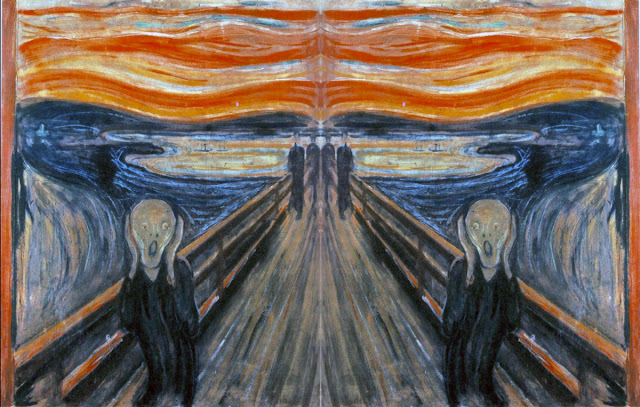Leaving aside the fact that many of these body challenges on social media are machine learning exercises meant to understand postural and gestural changes in the human body, one also needs to consider these acts from the perspective of human interest in body image and its deeper psychological needs.
Initially, when these games started on social media, allowing people to transform themselves into famous personalities, change their gender appearance, alter hairstyles, age themselves, or grow a beard, I viewed them solely from a machine learning or sociological perspective. However, as time went by, I began to see these games through the lens of the human psychological need to identify with achievements and fulfil inner desires. On the surface, these acts might seem like simple, innocent fun, but a different story emerges when one delves into the darker aspects of societal constructs of success. These acts reveal tragic notions of self-doubt, discovery, and the surrender of a hapless individual to social reality, leading to self-mockery and a hollow laugh at oneself for the world's amusement. An image of a desperate soul desperately shouting comes to mind.
For those who feel otherwise, consider the effort everyone puts into getting the perfect selfie, where they look their best, compared to the humorous images these social media games demand. Recall the period when people started using their childhood photos as their social network display pictures (DPs), believing they looked "cute" or "charming." These grownups' acts of seeking societal approval or acceptance of their "lovable" or "charming" existence reflect an inner desire many carry throughout their lives.
Interestingly, despite seeking societal approval for their interesting existence, many people are embarrassed to associate their social presence with childhood or comical images. These individuals, who believe in "gracefully greying" as a dignified social identity, fondly remember their childhood photos but feel embarrassed to link their current selves to that childhood "cuteness." The "10 Years Challenge" success on social media stems from these embarrassed individuals. They can present their charming youth or childhood images alongside their present-day photos, proclaiming to the world, "See, I am also charming!" They reassure themselves that they are different from those who share their childhood photos to seek public attention, forgetting that their sense of achievement is no different from others. They, too, shout, "Look, I am different and charming!"
My enquiry as an artist led me to select a few iconic body images in art over centuries to understand this "10 Years Challenge." As deep learning parameters in machine language show us, removing ten years from these iconic beauties involves broadening the eyes slightly, lowering the forehead, shortening the nose, thinning the upper lip, bulging the lower lip a bit, lifting the mouth edges, lifting the chin, and shrinking the cheeks from the sides. In other words, with some plastic surgery-like alterations, they become their past selves.
Suddenly, a few millimetres here and there on these iconic representations of human desire or body became significant. They represented achievement, identity, sense of purpose, ego, celebration, and embarrassment for an entire human society. The world became an extension of those millimetres defining the idea of ageing and our inner desire for its denial.
Or is it so? Where does the idea of societal approval exist in this body game of millimetres of lift or sagging in its image?
The answer perhaps lies in the famous painting popularly known as "The Scream" by Munch. The painting depicts a shouting soul in its skeletal remains without facial features other than a shouting expression. Standing at the edge of a bridge near the riverbanks, the unfortunate person has almost crossed the river. In the background, two faint figures seem to be crossing the river or walking a little behind the shouting soul. Whether these people are accompanying, competing with, or shadowing the person is still being determined. They could be rich men in grey suits, covert intelligence officials, or strangers on a walk. The river below and the sky above are violently chaotic, leaving us unsure of anything except the person with the featureless face shouting in pain and agony with both hands covering their ears. Crucially, the person is not shouting at the chaotic nature behind, the people behind, or the situation behind. They are screaming at us—the world, where the world itself becomes the backdrop.
As I mentioned, these social media body challenges are not merely part of machine learning studies for me; they are manifestations of deep human anguish and insecurities associated with human existence. Social networks and their studies are merely market responses to these human conditions.
To me, the entire saga of social networks suddenly became the most complex abstract expressionist painting of Munch—"The Scream"—where the world behind us becomes the world we shout at, and our body is merely an expression of our deep agony, rendering the aesthetics of body-defining features immaterial.







